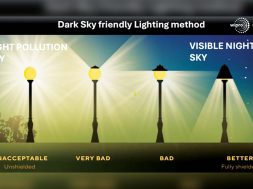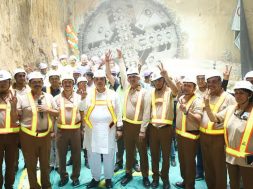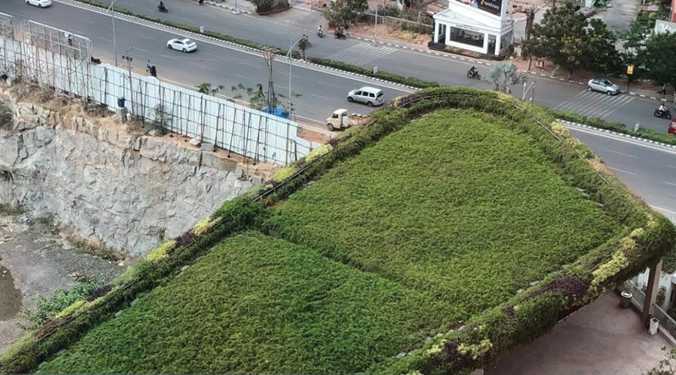
GRIHA has a proud green building footprint of 5,25,02,869 sqm. with over 2,200 projects so
far and is continuously adding on to these numbers.
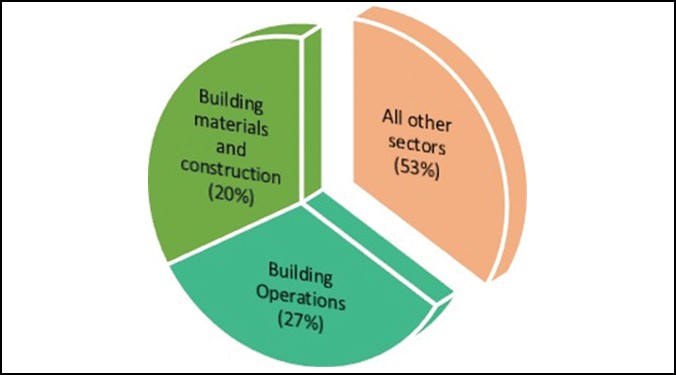
In the COP 26 UN Climate Change Conference that washeld in Glasgow, India pledged a few commitments. Afew of these pledges were – to take its non-fossil energycapacity to 500 GW, reduce the carbon intensity of thenation’s economy by less than 45% by 2030 and achievenet-zero carbon emissions by 2070.
The built environment generates nearly 47% of annualglobal CO2 emissions. 27% of these emissions are attributedto building operations that include energy and waterconsumption, post occupancy solid waste generation,operation & maintenance (O&M) protocols of the systemsinstalled, etc. while building materials and constructionare responsible for an additional 20% (ReferImage1).(https://architecture2030.org/why-the-building-sector/).Therefore, the building industry becomes one of the keycontributors to achieving these pledged targets, and hasthe maximum potential to contribute to reducing carbonemissions via low cost interventions, as compared to othersectors like agriculture, industries, forestry, transport, etc.
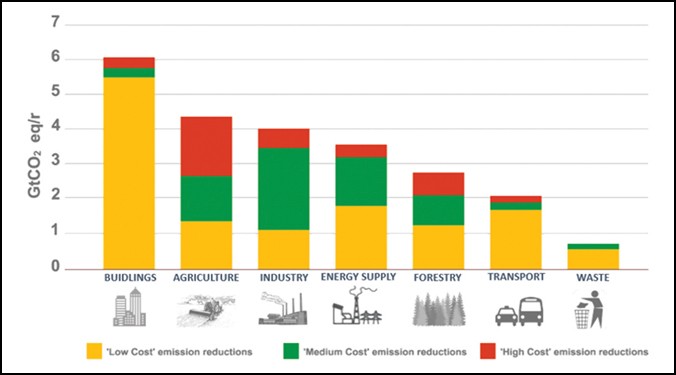
A major part of building operations usually comprise energy and water consumption performance. Throughincorporation of energy efficiency measures (EEMs) the load on mechanical systems can be drastically cut. Some EEMs could be simple design considerations such as placing non habitable spaces of the building towards least favorable direction (in terms of heat gain or cold winds as suitable for the climate zone), reducing openings in such directions, integration of daylight by appropriate design features like light shelves and jalis. To supplement further carbon emission offsets, efficient equipment like BEE labelled appliances or ECBC compliant equipment and renewable energy systems should be installed. The better these systems perform, the greater is the energy savings. Also, probability to incorporate low energy intense systems like geothermal cooling, misting system, downdraft technique, etc. can be explored.
The Akshay Urja Bhawan HAREDA which is an office building in Panchkula (composite climate zone) showcases exemplary integration of passive design strategies like stack ventilation, courtyard planning, designing vents to facilitate wind movement within the building, etc. clubbed with misting system (Refer Image 3) to eliminate the use of mechanical cooling in most of the habitable spaces. The Energy Performance Index (EPI) of that project is 17 KWh/ m2/year, which is a reduction of 61% from the established GRIHA benchmark.
ITC’s luxury hotel Kohenur, Hyderabad, demonstrated a reduction of 82.24% in its EPI. It has a green roof and a green wall, which boasts a reduction of 1°C and 3°C respectively, in the respective zones of installation (Refer Images 5 & 6). All of their fenestrations were shaded using different design strategies, which also helped cut down the heat ingress in the building.
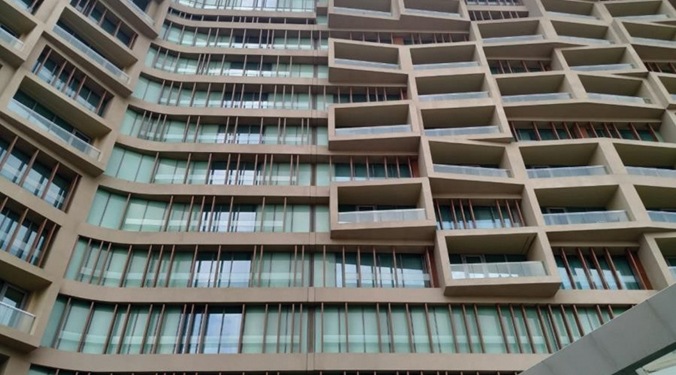
Titan Corporate Campus, Bangalore has forced draft evaporative cooling system, which has helped reduce the cooling load of the project and this clubbed with other strategies helped the project achieve a reduction of 30.39% in its EPI. These are all GRIHA 5 star rated projects. Green buildings can overall help achieve an energy consumption reduction of anywhere between 40-60% depending on the strategies adopted.
The other major consumption component of a building operation is water. Installation of low flow plumbing fixtures, reuse of treated wastewater and stored rainwater can help in reducing the building’s dependency on groundwater or municipal supply. Treated wastewater could be used in flushing, landscaping and cooling towers. To cite an example, ITC Kohenur was able to demonstrate a reduction of 53.91% in its building water consumption due to installation of water efficient fixtures and a reduction of 63.87% in its landscape water consumption due to plantation of native and adaptive species integrated with efficient irrigation systems like drip irrigation and sprinkler systems. The percentage of reduction in landscape water consumption can be anywhere between 40-80% is planned and strategized well.
To optimize consumption is one step of the process. The other is to integrate smart monitoring systems like and data acquisition (SCADA), to monitor and control malfunctioning and / or irresponsible usage.
Stressed out landfills is another glaring issue that can be addressed by green buildings. Simple strategies like waste segregation, treatment of organic waste and responsible disposal of recyclable waste can help reduce the quantum of waste that end up in landfills. A lot of campus level projects that are registered with GRIHA are upcoming with strategies such as vermicomposting to manage organic waste within the site itself.

There have been many prestigious projects that have been registered and rated under GRIHA. An upcoming project of repute that has been registered with GRIHA is the Central Vista Redevelopment Project. The proposed redevelopment consists of multiple pockets of development, one being the new Parliament building. GRIHA had conducted the first due diligence site visit of the New Parliament Building in the vicinity of the Central Vista project. All necessary site management strategies like appropriate air, water and ground pollution control measures; preservation of topsoil, measures to reduce consumption of potable water, construction waste handling, labour safety and sanitation were adopted.
GRIHA has a proud green building footprint of 5,25,02,869 sqm. with over 2,200 projects so far and is continuously adding on to these numbers. The estimated cumulative annual energy saving is 9,29,30,484 MWh and installed capacity of renewable energy system is 3,043 MWp.
The water savings are estimated to be 33,20,80,780 kL per annum. Additionally, the trees planted are around 7,37,848 and proposed to be planted are over 64,000. The effectiveness of these implemented and proposed to be implemented strategies shall lead to 3,10,49,743 tons of
CO2 reduction per annum.
GRIHA projects reiterate the belief that ‘Traditional wisdom merged with technology should be the way forward in the changing trends of Sustainable and Green Buildings’.
Website – www.grihaindia.org
Cookie Consent
We use cookies to personalize your experience. By continuing to visit this website you agree to our Terms & Conditions, Privacy Policy and Cookie Policy.
